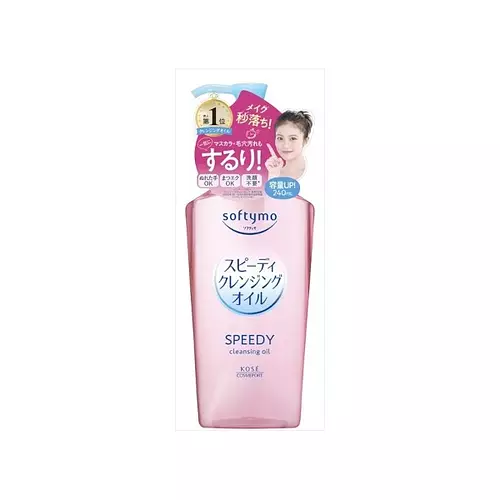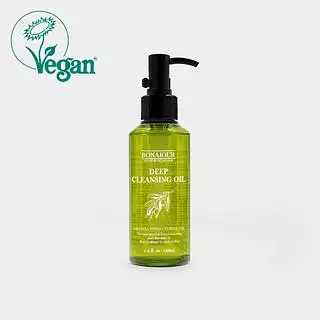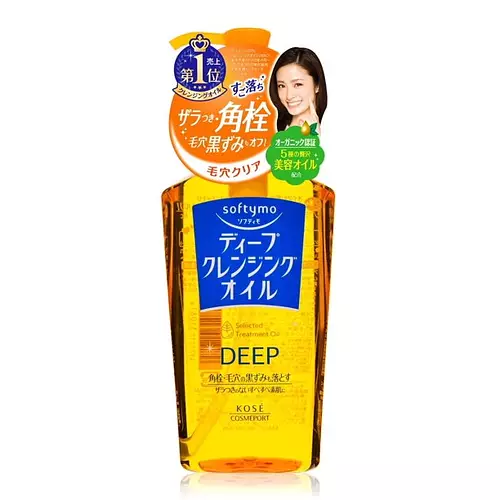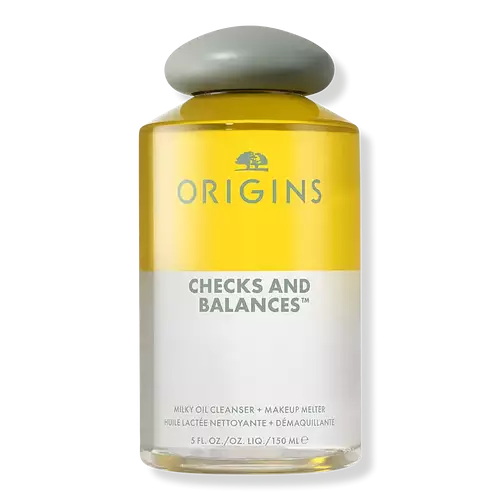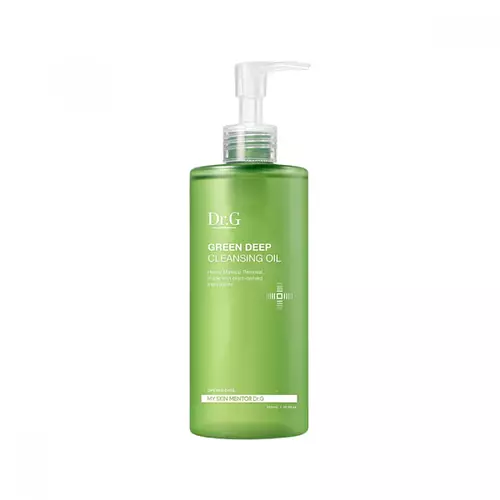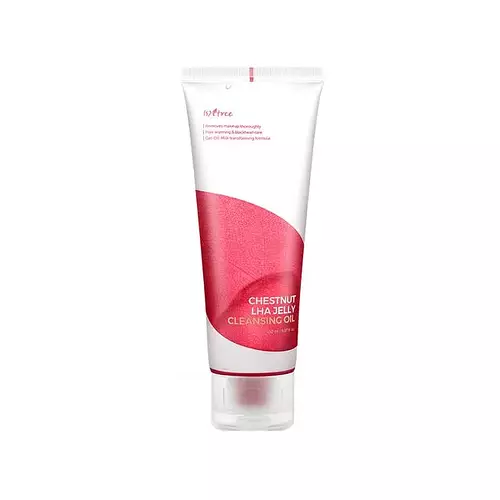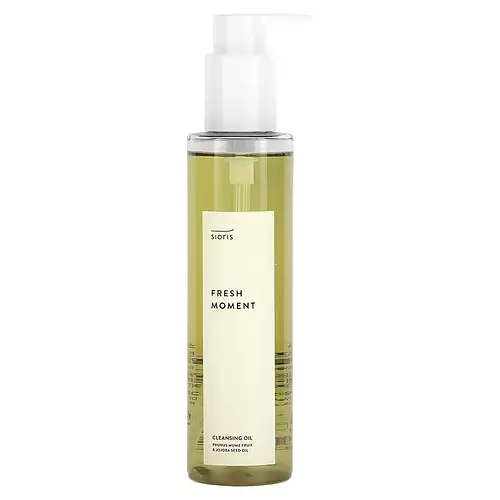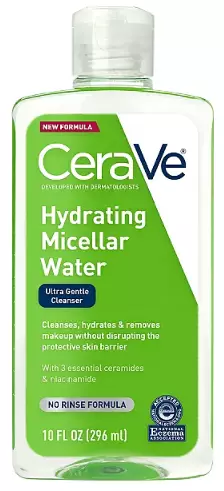Updated on May 06, 2024
Overview
What they are
These products are both reef safe makeup removers. They have a total of 5 ingredients in common
Cool Features
They both contain Vitamin E
Suited For
They're both likely to be good for anti aging, dry skin, brightening skin and dark spots
Free From
They both do not contain any harsh alcohols, parabens or sulfates
What's Inside
They both contain fragrances and oils
We independently verify ingredients, and our claims are backed by peer-reviewed research. Spot a product that needs an update? Let us know.
Ingredient Info
Kosé Softymo Speedy Cleansing Oil 21 ingredients
ma:nyo Pure Cleansing Oil 25 ingredients
- Glycine Soja Oil
- Corylus Avellana Seed Oil
- Vitis Vinifera Seed Oil
- Olea Europaea Fruit Oil
- Camellia Japonica Seed Oil
- Oenothera Biennis Oil
- Simmondsia Chinensis Seed Oil
- Helianthus Annuus Seed Oil
- Argania Spinosa Kernel Oil
- Orbignya Oleifera Seed Oil
- Oryza Sativa Bran Oil
- Lavandula Angustifolia Oil
- Citrus Aurantium Dulcis Oil
- Melaleuca Alternifolia Leaf Oil
- Glycine Soja Oil
- Corylus Avellana Seed Oil
- Sorbeth-30 Tetraoleate
- Vitis Vinifera Seed Oil
- Olea Europaea Fruit Oil
- Isoamyl Laurate
- Camellia Japonica Seed Oil
- Oenothera Biennis Oil
- Simmondsia Chinensis Seed Oil
- Helianthus Annuus Seed Oil
- Argania Spinosa Kernel Oil
- Orbignya Oleifera Seed Oil
- Oryza Sativa Bran Oil
At a glance
Click on any of the items below to learn more
Kosé Softymo Speedy Cleansing Oil 21 ingredients
ma:nyo Pure Cleansing Oil 25 ingredients
Notable Ingredients
This product contains 1 ingredient that may have this attribute:
This product contains 1 ingredient that may have this attribute:
Benefits
This product contains 5 ingredients that may have this attribute:
This product contains 1 ingredient that may have this attribute:
This product contains 1 ingredient that may have this attribute:
This product contains 2 ingredients that may have this attribute:
This product contains 1 ingredient that may have this attribute:
This product contains 2 ingredients that may have this attribute:
This product contains 3 ingredients that may have this attribute:
Concerns
This product contains 2 ingredients that may have this attribute:
This product contains 1 ingredient that may have this attribute:
Notable Ingredients
This product contains 1 ingredient that may have this attribute:
Benefits
This product contains 4 ingredients that may have this attribute:
This product contains 1 ingredient that may have this attribute:
This product contains 1 ingredient that may have this attribute:
This product contains 2 ingredients that may have this attribute:
This product contains 1 ingredient that may have this attribute:
This product contains 2 ingredients that may have this attribute:
This product contains 1 ingredient that may have this attribute:
This product contains 1 ingredient that may have this attribute:
This product contains 1 ingredient that may have this attribute:
Concerns
This product contains 1 ingredient that may have this attribute:
Ingredients Side-by-side
Ingredients Explained
These ingredients are found in both products.
Ingredients higher up in an ingredient list are typically present in a larger amount.
Olea Europaea Fruit Oil is the fixed oil obtained from the ripe fruit of the Olive. In other words - olive oil.
The primary contents of olive oil are glycerides of the fatty acids linoleic, oleic and palmitic.
Olive oil also contains antioxidants such as Vitamin E. Antioxidants may help reduce signs of aging by fighting unstable free-radical molecules. It also contains Vitamins A (retinol), D, and K.
The squalene in olive oil makes it a great emollient. Emollients help soothe and soften your skin by trapping moisture in. This makes olive oil a great skin moisturizer.
Studies show olive oil to have antibacterial and antifungal properties in low concentrations. Another study found olive oil irritated sensitive oily skin. We always recommend speaking with a professional about using this ingredient in your routine.
Learn more about Olea Europaea Fruit OilTocopherol (also known as Vitamin E) is a common antioxidant used to help protect the skin from free-radicals and strengthen the skin barrier. It's also fat soluble - this means our skin is great at absorbing it.
Vitamin E also helps keep your natural skin lipids healthy. Your lipid skin barrier naturally consists of lipids, ceramides, and fatty acids. Vitamin E offers extra protection for your skin’s lipid barrier, keeping your skin healthy and nourished.
Another benefit is a bit of UV protection. Vitamin E helps reduce the damage caused by UVB rays. (It should not replace your sunscreen). Combining it with Vitamin C can decrease sunburned cells and hyperpigmentation after UV exposure.
You might have noticed Vitamin E + C often paired together. This is because it is great at stabilizing Vitamin C. Using the two together helps increase the effectiveness of both ingredients.
There are often claims that Vitamin E can reduce/prevent scarring, but these claims haven't been confirmed by scientific research.
Learn more about TocopherolVitis Vinifera Seed Oil comes from the grape vine. Grape seeds are a byproduct of creating grape juice or wine.
The components of grape seeds have many skin benefits. Research has found it to be antimicrobial and anti-inflammatory. It also contains many potent antioxidants such as Vitamin E , Vitamin C, proanthocyanidins, polyphenols, flavonoids, and anthocyanins. Proanthocyanidin has been shown to help even out skin tone.
Antioxidants help fight free-radical molecules. Free-radical molecules are capable of damaging our cells and other genetic material. Antioxidants help stabilize free-radicals by donating extra electrons. Grape seed extract may help reduce the signs of aging.
The antimicrobial properties of grape seed may help treat acne. However, more research is needed to support this claim.
Grape seed has also been found to help absorb UV rays. Grape seed extract should not replace your sunscreen.
The fatty acids of grape seed oil give it emollient properties. Emollients help soothe and soften your skin by creating a film. This film traps moisture within, keeping your skin hydrated.
Learn more about Vitis Vinifera Seed OilThis ingredient is the fixed oil extracted from seeds of the desert shrub Jojoba. It is more commonly known as jojoba oil. The seed oil is liquid wax ester from the plant. It is non-comedogenic.
Jojoba oil does not contain fragrance and has many fatty-acids, making it a great soothing ingredient. Jojoba contains Vitamin E, a great moisturizing ingredient. Vitamin E is also an antioxidant. Antioxidants help protect your skin against free-radical damage. This may help in anti-aging.
Jojoba seed oil is a humectant, meaning it helps draw moisture from the air. This helps keep your skin hydrated.
While jojoba has antibacterial properties, it is only able to kill some bacteria. It has also been shown to help in wound healing. Indigenous cultures have used jojoba as a moisturizer and to help treat burns.
It is found to be similar to natural human skin sebum, so it has a great effect on dry skin. Jojoba oil may even help with regulating sebum production.
Although jojoba oil is non-comedogenic, we recommend speaking with a professional about using this ingredient if you have any concerns.
Jojoba oil may not be fungal acne safe. We recommend speaking with a professional if you have any concerns.
Jojoba is native to the southwestern US.
Learn more about Simmondsia Chinensis Seed OilSqualane is an emollient that helps the skin hold onto moisture. It's an oily liquid that occurs naturally in certain types of fish and plant oils.
Because squalane boosts hydration in the skin, it also comes with plenty of benefits: it is an antioxidant and can help fight free radicals and skin damage. Squalane is also found to have a detoxifying effect when applied.
Squalane comes from squalene, which occurs naturally within the sebum of our skin. It is one of the oils our skin produces to keep itself hydrated. Squalane is the hydrogenated version of squalene and has a longer shelf life.
Research shows that squalane is non-irritating (even at 100% concentration).
In general, it's a fantastic ingredient. It does a great job at hydrating the skin, and it's suitable for those with sensitive skin.
The source of squalane may impact malassezia / fungal acne. This is because olive oil derived squalane can contain impurities such as fatty acids and plant waxes. Sugarcane derived squalane is recommended for anyone with malassezia concerns.
Is squalane vegan?
This depends on the source. Squalane can be derived from both plants and animals. Most squalane used in skincare comes from plants.
Please note: the source of squalane is only known if disclosed by the brand. We recommend reaching out to the brand if you have any questions about their squalane.
Read more about squalene with an "e".
Learn more about SqualaneIngredient Ratings
Here's what our community thinks of the ingredients in these two products.
When to use
Kosé Softymo Speedy Cleansing Oil 21 ingredients
ma:nyo Pure Cleansing Oil 25 ingredients


Reviews
Here's what our community thinks
Kosé Softymo Speedy Cleansing Oil 21 ingredients
Lee Young
Has a thick texture similar to olive oil and works well, but might require two or three pumps for stubborn eye makeup. Leaves a slight residue...
Has a thick texture similar to olive oil and works well, but might require two or three pumps for stubborn eye makeup. Leaves a slight residue after emulsifying and washing off, but a foaming second cleanser takes care of that.
ma:nyo Pure Cleansing Oil 25 ingredients
leigh
Great
Disclaimer: I have combo skin that tends to be dry in my cheeks and oily everywhere else. I also have eczema on my cheeks.
This makes my...
Great
Disclaimer: I have combo skin that tends to be dry in my cheeks and oily everywhere else. I also have eczema on my cheeks.
This makes my skin feel nice after using. It doesn't feel stripped or irritated. It gets the sebaceous filaments out of my nose area. However, it does take some work. I don't really wear makeup so I only use this on a nightly basis to get my sunscreen off.
Rafaela
I use it as the first step of my night routine to take off my makeup and sunscreen. I have to rub it for a while to take off my mascara so if you...
I use it as the first step of my night routine to take off my makeup and sunscreen. I have to rub it for a while to take off my mascara so if you use waterproof mascara you would have to rub it even longer.
It's a little hard to spread compared to oil cleansers I used before (Softymo and Shu Uemura) so I use 2 full pumps of product every time, it's lasting very long even though I use it every night.
